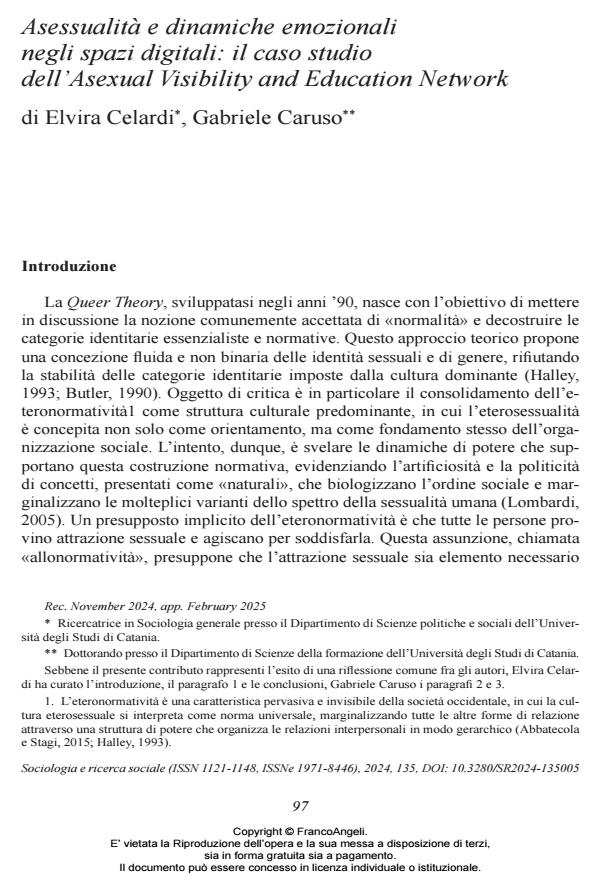Asessualità e dinamiche emozionali negli spazi digitali: il caso studio dell’Asexual Visibility and Education Network
Titolo Rivista SOCIOLOGIA E RICERCA SOCIALE
Autori/Curatori Elvira Celardi, Gabriele Caruso
Anno di pubblicazione 2025 Fascicolo 2024/135
Lingua Italiano Numero pagine 21 P. 97-117 Dimensione file 256 KB
DOI 10.3280/SR2024-135005
Il DOI è il codice a barre della proprietà intellettuale: per saperne di più
clicca qui
Qui sotto puoi vedere in anteprima la prima pagina di questo articolo.
Se questo articolo ti interessa, lo puoi acquistare (e scaricare in formato pdf) seguendo le facili indicazioni per acquistare il download credit. Acquista Download Credits per scaricare questo Articolo in formato PDF

FrancoAngeli è membro della Publishers International Linking Association, Inc (PILA)associazione indipendente e non profit per facilitare (attraverso i servizi tecnologici implementati da CrossRef.org) l’accesso degli studiosi ai contenuti digitali nelle pubblicazioni professionali e scientifiche
This contribution highlights the crucial role played by digital communities in providing safe and supportive environments for marginalized sexual identities, thereby enhancing their visibility and self-awareness. Specifically, the study examines the impact of the Aven (Asexual Visibility and Education Network) community on the emotional experiences of its members. Through sentiment analysis conducted on over 4,000 user comments, supported by Natural Language Processing (Nlp) tools, recurrent themes and predominant emotions expressed by users were identified. The findings, enriched by semi-structured interviews, reveal not only frustration and stigma but also experiences of acceptance and personal growth.
Elvira Celardi, Gabriele Caruso, Asessualità e dinamiche emozionali negli spazi digitali: il caso studio dell’Asexual Visibility and Education Network in "SOCIOLOGIA E RICERCA SOCIALE " 135/2024, pp 97-117, DOI: 10.3280/SR2024-135005